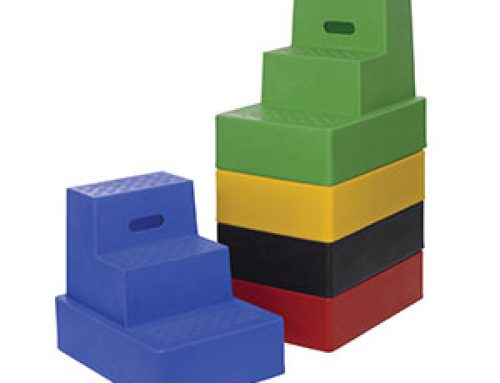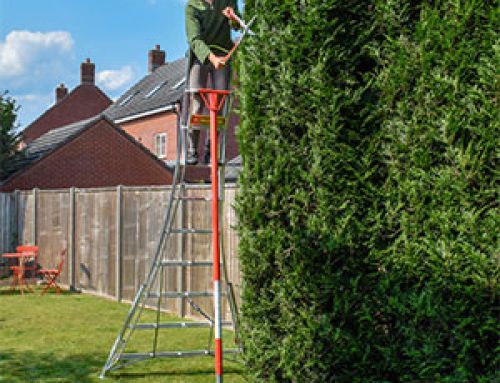Sometimes a ladder just isn’t enough when you need to get on top of things, or need something a little more stable and that's when you look for scaffolding towers. A scaffolding tower is decidedly remarkable, not only because it is extremely versatile, but also because it is easy to use and move around. The stability provided by a scaffolding tower is far superior to the stability provided by a ladder. Sure, you can use ladders if you have odd jobs around the house, but when you need to reach great heights, you have to make use of equipment that will provide for a larger base at ground level, because stability of equipment is an important consideration when you have to climb high: At least it is if you want to do it safely!
The Work at Height Regulations 2005 (guidelines that exist to keep workplaces safer) mandates that you have to make a detailed assessment while working with access equipment and that includes choosing your  equipment too. The scaffolding you choose should be decided on according to a number of factors – including safety, reliability and the nature of your job.
Precautions to take while using a ScaffoldingTower
Using a scaffolding tower can turn out to be very tricky if you are not careful. Normally, you would stand on the work platform to reach something that you need to do that is high up, and there would be a built in ladder for you to climb and descend safely. The ladder’s rungs should be spaced at a distance of 230-300 mm if you want to ensure safe passage.
The scaffolding tower should be placed on firm and stable ground. The ground itself should be dry and free of debris or other hindrances that might hinder the stability of the equipment. But, if you have to place the tower outside where the ground is not firm, then go for towers with adjustable legs. These will keep the tower stable on uneven ground as you will be able to adjust each leg to match the level of the ground.
To ensure maximum performance from your scaffolding tower, you must use it only after reading the instruction manual that should accompany your purchase. In the mean time, here are some handy tips to bear in mind when you are looking to choose the scaffolding most suitable to your needs:
Which material to go for?
Most people go for either steel or aluminum scaffolding towers. Aluminum scaffolding is probably sold more than steel because of its resilient, high tensile strength and lightweight feature, so you can be assured of its performance and durability. Most DIY users are intent on going for the aluminum scaffolding tower because it can be easily handled and it can endure long hours of exterior work. An aluminum scaffolding tower doesn't rust and it can withstand the harsh elements of the weather. However if you plan to use the tower when it is raining outside, make sure it is fitted with anti-slip accessories. Aluminum could get slippery when wet and it will be dangerous when you are trying to descend or ascend.
Your scaffolding tower must be chosen carefully because shoddy equipment could be unsafe and lead to accidents,so when you are choosing, make sure it has a wide footprint. That will allow you to have more space to keep your tools and maintain stability. Aluminum scaffolding towers with wider footprint will not wobble. Make sure your tower has stabilisers or outriggers, because they will increase the stability. On an average, the maximum load capacity of a lightweight  aluminum scaffolding tower is 23.5 stone (150kg) enough for an average person plus some light tools and materials.. The weight of the equipment alone will be as little as 25 kg, so you can easily push it around once it is fitted with wheels. The platform in your tower can be raised to various heights (30 cm apart) and locked in position. If you are looking for an aluminum tower for domestic use, then you could go for the ones that give you a four, six or seven meter working height. Working height is generally considered to be 2 metres above platform level…or the height to which you can reach when stood on the platform.
Scaffolding Tower Accessories
There are some accessories that you can buy to make your tower even more useful, such as the following:
Footpads: Easily available in the market, these footpads will spread the load of the tower over a larger surface area… this ensures the tower legs do not sink into soft ground.
Platform Decks: Extra platform deck units may be purchased to allow working from varying levels within the tower without the need to keep moving the platform up and down..remember that each platform will require handrails and toeboards to be installed for your safety.
Foam impact protection system–Foam rings which clip around the legs of the tower to protect the tower against impact damage when moving the tower around.
Tower castor wheels – The ideal accessory for people looking to move their scaffolding tower. The wheels often have a rubber overlay that makes them flexible, quiet and efficient, and have integral brakes for locking the tower in position before ascending.
Outriggers / Stabilisers – Upgrade the safety of your aluminum scaffolding tower when you are raising its height with outriggers. These attach to the base of the tower to offer more stability by increasing the base area or footprint of the tower.
Scaffolding towers are designed for a specific purpose and they must be used for that purpose only. The instruction manual, provided along with the product will have detailed specifications on the type of jobs you can use the tower for. It is essential that you follow the instructions provided with your tower to prevent accidents and to enjoy the safe use of your product.
Here are some basic rules to follow when using a scaffolding tower:
Strong winds – The tower must never be used during strong winds because there is a chance you could topple and fall from it.
Placing bricks or similar objects to support the tower – If your tower is not on firm ground then do not look for bricks and blocks to support its weight, You are just asking for trouble. Towers must only be placed on firm solid surfaces.
Maximum height – Every tower details the height limit to which you can take the tower… never exceed this recommendation.
Do not overload the tower beyond the recommended limit because the tower might not be able to handle your weight, and the weight of the equipment you are carrying.
Never use a ladder or anything else placed on the tower platform in order to gain extra height, this is extremely dangerous and will inevitably lead to an accident.
Lack of proper components – Make sure each component of your scaffolding tower is intact and in working condition before erecting the tower. Missing components could reduce the stability of the equipment causing it to collapse.
Compatible components – When you buy your scaffolding tower from the vendor, you are provided with all the necessary accessories and components. It is essential that you use only those components because everything will fit together properly.
Moving the ScaffoldingTower
To be on the safe side, you must be very cautious when you are moving the tower. It must never be done hurriedly because you have to check the ground for any unevenness, bumps and potholes before you attempt to move it. If you are standing on the tower and you want to move it a few yards, you may be tempted to ask someone to move you around – Don’t! Get down from your tower, reduce its height to about 4 meters and then move it. Pushing and pulling the tower to its desired location is fine, as long as you are not sitting or standing on it. Also, make sure there are no tools or materials left on the platformwhen you are moving it, as they may fall off and injure someone on the ground.
Hopefully we have given some helpful advice in choosing the scaffolding tower that is right for you. To view all of our scaffolding towers,  take a look at the following link https://www.midlandladders.com//catalog/Scaffolding_Towers-19-1.html or call us on 0300 303 22 99 to discuss your requirements further with our helpful, friendly sales team.
Midland Ladders are a Leading UK Distributor of Ladders, Aluminium ladders, Combination ladders, Step ladders, Scaffolding towers, Loft ladders, and all access equipment. Main Distributors for: Youngman, Titan, Lyte Ladders & Zarges, With Free Next Day Delivery UK wide.






Leave A Comment
You must be logged in to post a comment.